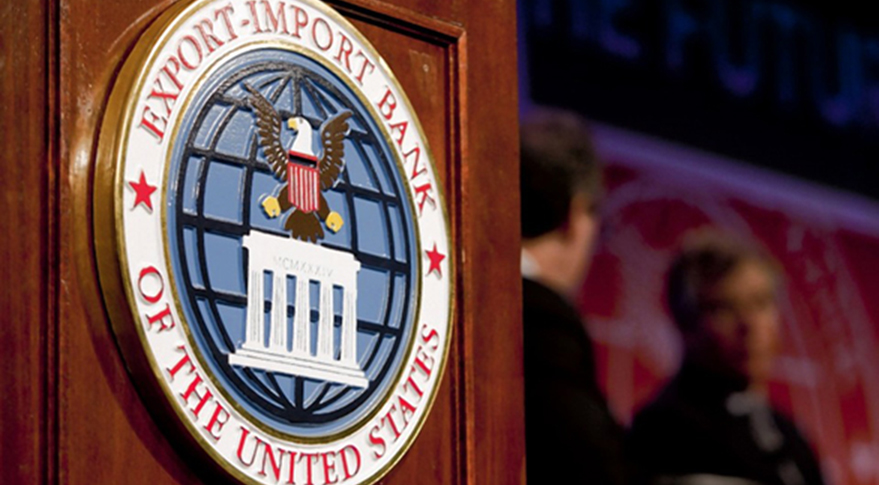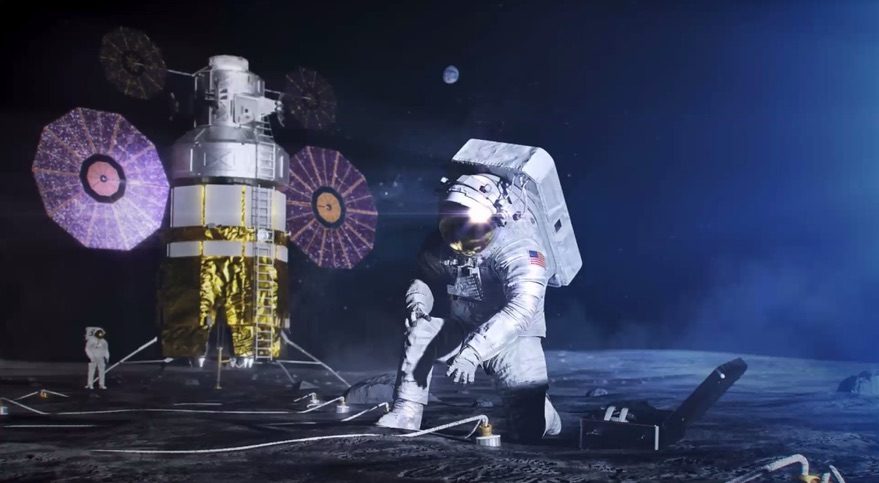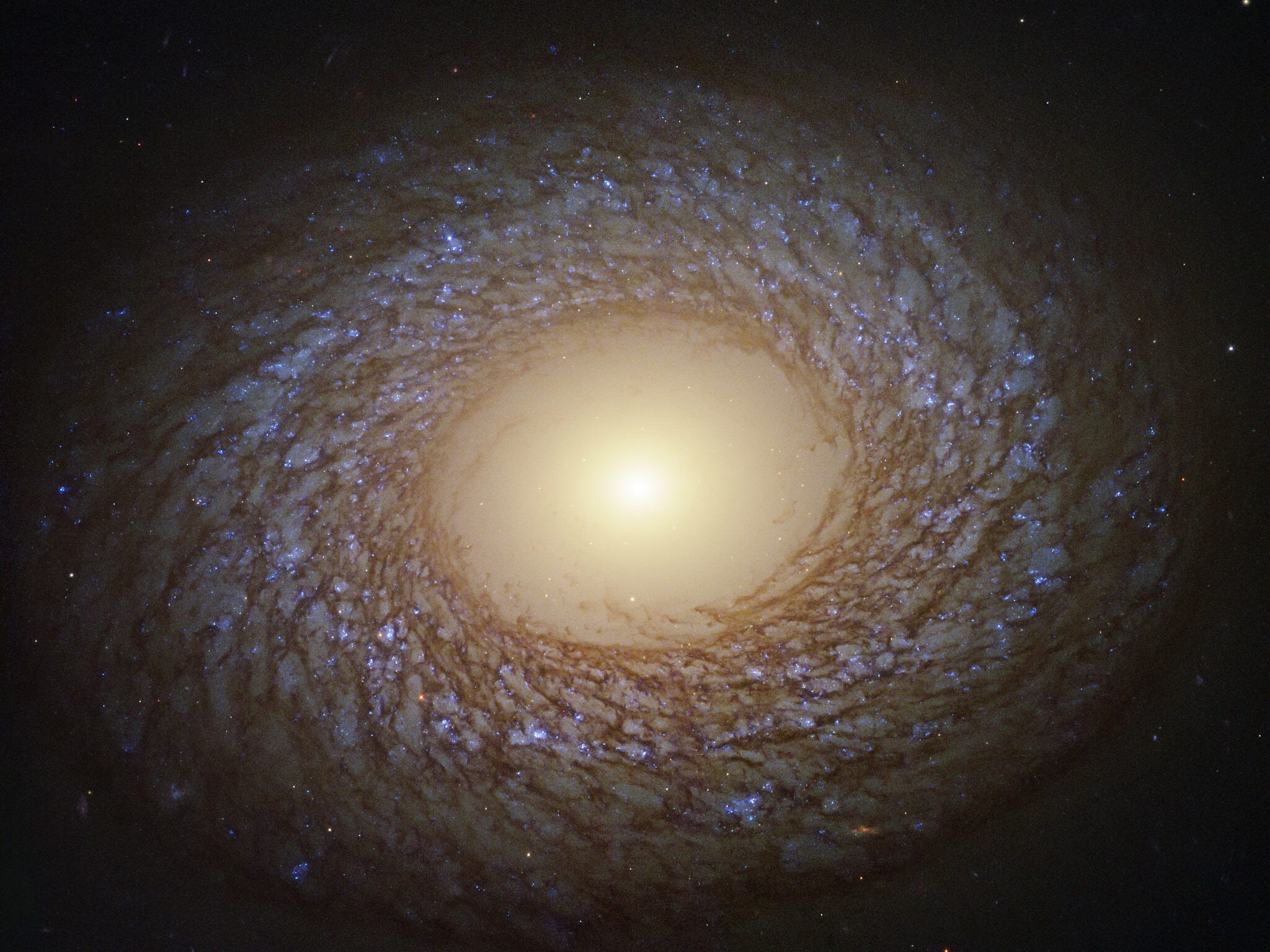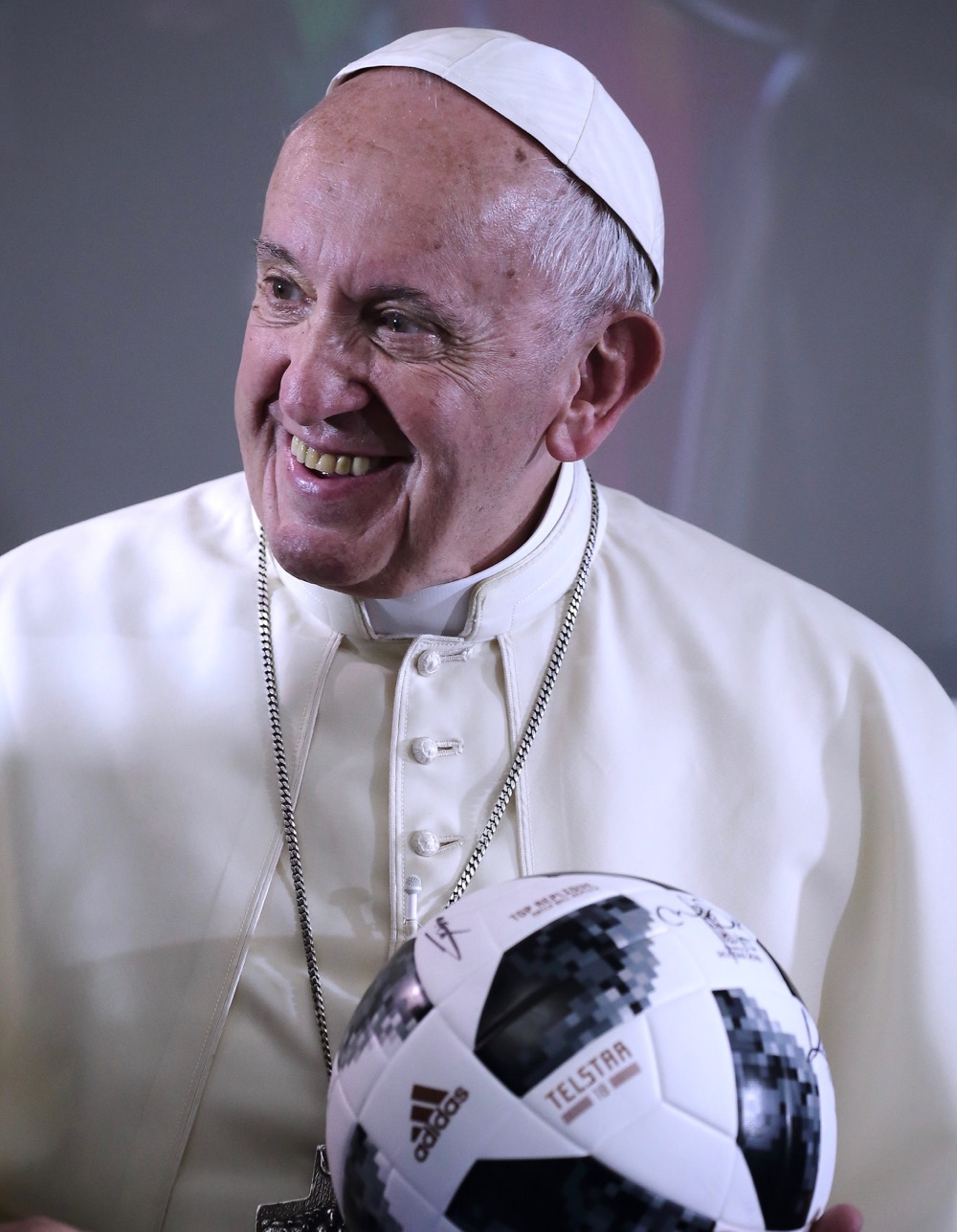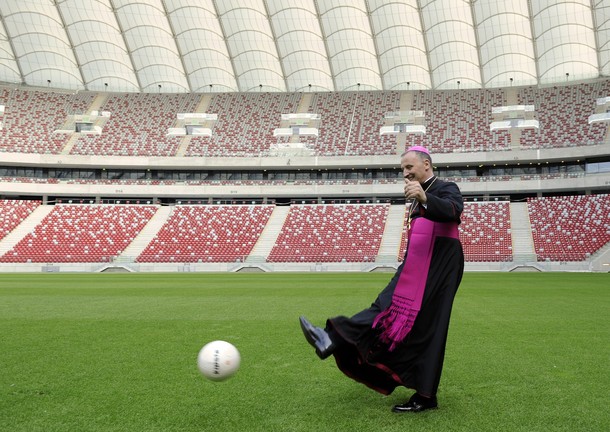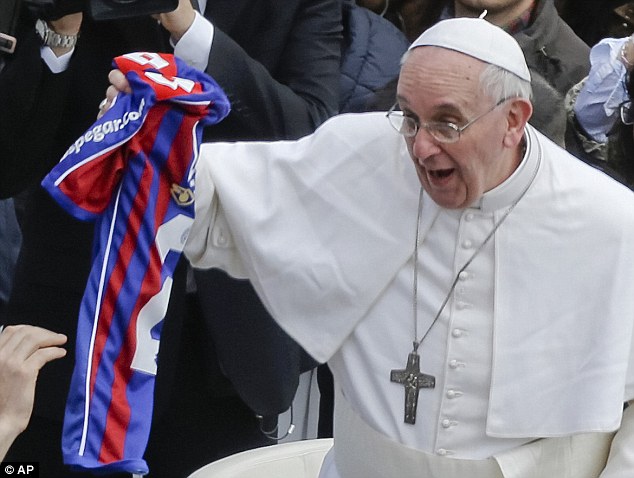CAPITALISM IN SPACE
The long countdown to commercial crew’s liftoff
How a 2005 call for ‘skin in the game’ started a 15-year countdown to the first human orbital spaceflight from U.S. soil since 2011
Success, the saying goes, has a thousand fathers. Sure enough, when a SpaceX Falcon 9 lifted off May 30, placing a Crew Dragon with two NASA astronauts on board into orbit on the first human orbital spaceflight from U.S. soil in nearly nine years, plenty of prospective parents stepped forward.
President Donald Trump, who attended the launch at the Kennedy Space Center, was quick to take credit for it. “With this launch, the decades of lost years and little action are officially over,” he said in a speech at KSC two hours after liftoff. “Past leaders put the United States at the mercy of foreign nations to send our astronauts into orbit. Not anymore.”
Others cried foul, noting that the commercial crew program started during the Obama administration. In a call with reporters days before the launch, former NASA Administrator Charles Bolden and former Sen. Bill Nelson (D-Fla.) praised work by Joe Biden, Obama’s vice president and the 2020 Democratic nominee for president, to build support for the program in its early years. “He was very much a part of the decision-making that went into this and ultimately brings us to this success,” Nelson said.
Jim Bridenstine, selected by Trump to lead NASA, did acknowledge the origins of the program and the work of his predecessor. “Charlie Bolden did just yeoman’s work in order to get this program off the ground, get it going, and here we are, all these years later, having this success,” he said at a prelaunch briefing.
Yet, the roots of the commercial crew program go deeper than the initial Commercial Crew Development awards NASA made in 2010. Looking back to the origins of NASA’s support for commercial crew development 15 years ago can help gauge the success of what took place at KSC last month.
Engaging the engine of competition
If there is a true origin for the commercial crew program, it may well be June 21, 2005. On that day, Mike Griffin, who became NASA administrator two months earlier, appeared at a Space Transportation Association breakfast on Capitol Hill. Attendees expected to hear him talk about his plans for implementing the Bush administration’s Vision for Space Exploration, but he decided to go in a different direction.
Griffin lamented a lack of competition he saw in the space industry, particularly when compared to the hypercompetitive technology industry in Silicon Valley. “For me as administrator, the problem is how do we engage that engine of competition more productively, so that it can work on behalf of space business?” he asked.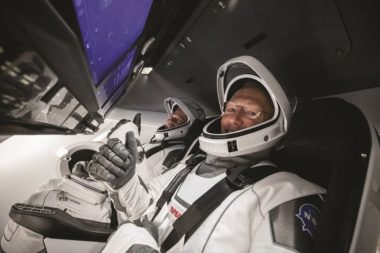
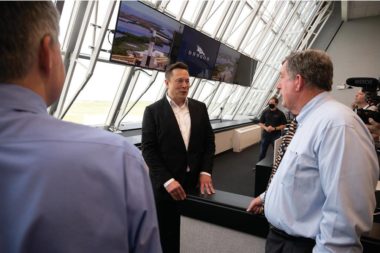
by Jeff Foust — July 5, 2020
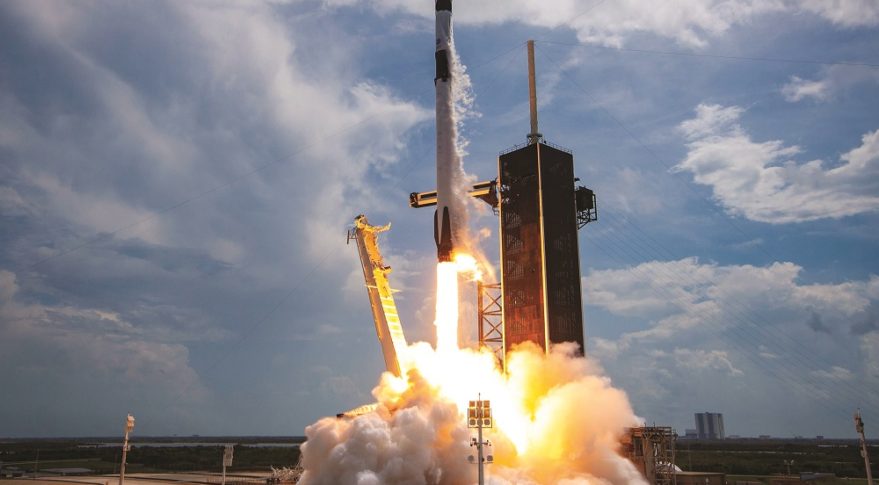

A SpaceX Falcon 9 rocket lifts off May 30 from Kennedy Space Center carrying Crew Dragon on a crewed test flight to the International Space Station. Credit: SpaceX
Success, the saying goes, has a thousand fathers. Sure enough, when a SpaceX Falcon 9 lifted off May 30, placing a Crew Dragon with two NASA astronauts on board into orbit on the first human orbital spaceflight from U.S. soil in nearly nine years, plenty of prospective parents stepped forward.
President Donald Trump, who attended the launch at the Kennedy Space Center, was quick to take credit for it. “With this launch, the decades of lost years and little action are officially over,” he said in a speech at KSC two hours after liftoff. “Past leaders put the United States at the mercy of foreign nations to send our astronauts into orbit. Not anymore.”
Others cried foul, noting that the commercial crew program started during the Obama administration. In a call with reporters days before the launch, former NASA Administrator Charles Bolden and former Sen. Bill Nelson (D-Fla.) praised work by Joe Biden, Obama’s vice president and the 2020 Democratic nominee for president, to build support for the program in its early years. “He was very much a part of the decision-making that went into this and ultimately brings us to this success,” Nelson said.
Jim Bridenstine, selected by Trump to lead NASA, did acknowledge the origins of the program and the work of his predecessor. “Charlie Bolden did just yeoman’s work in order to get this program off the ground, get it going, and here we are, all these years later, having this success,” he said at a prelaunch briefing.
Yet, the roots of the commercial crew program go deeper than the initial Commercial Crew Development awards NASA made in 2010. Looking back to the origins of NASA’s support for commercial crew development 15 years ago can help gauge the success of what took place at KSC last month.
Engaging the engine of competition
If there is a true origin for the commercial crew program, it may well be June 21, 2005. On that day, Mike Griffin, who became NASA administrator two months earlier, appeared at a Space Transportation Association breakfast on Capitol Hill. Attendees expected to hear him talk about his plans for implementing the Bush administration’s Vision for Space Exploration, but he decided to go in a different direction.
Griffin lamented a lack of competition he saw in the space industry, particularly when compared to the hypercompetitive technology industry in Silicon Valley. “For me as administrator, the problem is how do we engage that engine of competition more productively, so that it can work on behalf of space business?” he asked.

NASA astronauts Douglas Hurley, right, and Robert Behnken became the first people to launch from U.S. soil since 2011 when the launched May 30 aboard SpaceX’s Crew Dragon capsule. Credit: SpaceX
His solution was to use competition to address the need for access to the International Space Station once the shuttle was retired, which at the time was expected to be 2010. “What I’ve come to is that, for NASA, the best way to do that is to utilize the market that is offered by the International Space Station’s requirements to supply crew and cargo as the years unfold,” he said.
In that speech, he outlined an approach that would diverge from conventional NASA contracting approaches, such as the use of fixed-price awards and milestones, as well as the use of other transactional authority. Companies participating would be expected to make their own investments or, as Griffin put it, have “skin in the game.”
That led to the formation of the Commercial Orbital Transportation Services (COTS) program, which leverage those nontraditional approaches through the use of funded Space Act Agreements, with an initial tranche of $500 million.
Griffin’s speech, and the formation of COTS, did not appear out of thin air. Several factors created a foundation that enabled the program to survive. One was Griffin’s own background, with experience both in the government and the private sector. That included a stint running In-Q-Tel, the intelligence community’s venture capital arm, which he later said led him to believe that an approach like COTS could work at NASA.
A second factor was that NASA had already been looking at new approaches to space access. In 2000, it issued several small study contracts for a concept called Alternative Access to Station to examine new ways for transporting cargo to the ISS. Four years later, it commissioned “concept exploration and refinement” studies from 11 companies to support the Vision for Space Exploration, which included one from a startup called Transformational Space, or t/Space, who proposed the use of commercial vehicles for launching astronauts.
A third factor was the Ansari X Prize, which awarded $10 million for two successful flights of its SpaceShipOne crewed suborbital vehicle in 2004. SpaceShipOne’s development was funded by Paul Allen, the billionaire co-founder of Microsoft, who spent less than $30 million on the project.
“That had a large impact on NASA’s thinking,” recalled Brett Alexander, a former White House staffer who later worked for t/Space before joining Blue Origin, in a NASA oral history interview. “That said, ‘OK, if you can do that for $27 million, then orbital you might be able to do for an order of magnitude more, $300 or $400 million.’”
From the beginning, NASA envisioned including crew in the COTS program: besides supporting capabilities to transport cargo to and from the station, known as Capabilities A, B and C, there was an option for a Capability D, for crew transportation. COTS was run by the Commercial Crew and Cargo Program Office, or C3PO.
However, cargo came first. Griffin made that clear from the beginning, including in his 2005 speech. “First you’ve got to prove to me that you can deliver cargo, and then deliver crew,” he said.
SpaceX had, in fact, included a Capability D option in its COTS proposal, and company executives would often note they put a window in the original cargo version of Dragon because of their ambitions to carry crew. NASA, though, declined to exercise that option, despite pressure by some commercial space advocates who argued that cargo alone would stimulate little demand outside NASA. When the agency held a new competition to reallocate money originally awarded to the other original COTS company, Rocketplane Kistler, SpaceX submitted a proposal seeking to use that money for crew; NASA instead awarded it to Orbital Sciences for its Cygnus cargo vehicle.
“In our view, activating a crew provision would come only after substantial, even enormous, progress had been made on cargo. You have to learn to crawl before you can walk,” Griffin said in an interview several years after leaving NASA. “We certainly weren’t going to invest in crew development until cargo capability had been amply demonstrated.”
Commercial crew vision versus reality
It would be up to the next administration to pursue commercial crew. It did so not under the COTS framework, which remained to support cargo only, but instead through a series of programs — Commercial Crew Development, Commercial Crew Integrated Capability and Commercial Crew Transportation Capability — run by an office separate from C3PO. Yet it followed the COTS model through the use of funded Space Act Agreements and competition among several companies.
The success of Crew Dragon so far (both NASA and SpaceX acknowledge that success won’t be complete until the spacecraft safely returns NASA astronauts Bob Behnken and Doug Hurley to Earth, likely later this summer) would appear to be a vindication of what Griffin outlined in his speech 15 years ago. But it doesn’t perfectly follow that approach.
Developing crew, as it turned out, was far more expensive than envisioned in 2005. SpaceX’s COTS Capability D option was worth $308 million had NASA exercised it. Instead, SpaceX received ten times that amount — $3.1 billion — in various commercial crew awards since 2011. Boeing, the other company working on a commercial crew vehicle for NASA, has received even more: $4.8 billion.
Those early cost estimates, though, were little more than rough guesses. “People often ask me, ‘Where did the $500 million come from?’” Griffin recalled in that interview after leaving NASA, referring to the amount he set for COTS. “Truthfully, I just made it up. I just multiplied what we had in In-QTel by 10.”
There’s also Griffin’s desire for “skin in the game,” or contributions by the companies involved in the program. For COTS, the companies involved did invest significant money. Both NASA and SpaceX acknowledged after COTS ended that while NASA provided $396 million, SpaceX put in about $850 million.
But for commercial crew, neither Boeing nor SpaceX will say how much of their own money they have invested in their systems, beyond a Boeing statement in January it would take a $410 million charge to cover costs associated with a second uncrewed test flight of its Starliner spacecraft after the first encountered serious problems. Speculation, though, is that the companies’ investments have been far less than the NASA funding.
“SpaceX invests heavily in our products, but candidly I can’t tell you what the investment has been in Dragon 2. Not because I don’t want to, but I don’t know what the number is,” said Gwynne Shotwell, president and chief operating officer of SpaceX, at a briefing NASA held about a month before the Demo-2 launch.
But did NASA get a good deal? Even within the agency opinions vary. “It’s kind of surprising. We did lower the costs, but we didn’t lower it as much as we were hoping,” said Ken Bowersox, acting associate administrator of human exploration and operations, at a June 9 meeting of two National Academies committees. “People were hoping for a factor of 10 reduction in costs, right? And we’re just not there. I’d say it’s probably more like 20% to 40%.”
His solution was to use competition to address the need for access to the International Space Station once the shuttle was retired, which at the time was expected to be 2010. “What I’ve come to is that, for NASA, the best way to do that is to utilize the market that is offered by the International Space Station’s requirements to supply crew and cargo as the years unfold,” he said.
In that speech, he outlined an approach that would diverge from conventional NASA contracting approaches, such as the use of fixed-price awards and milestones, as well as the use of other transactional authority. Companies participating would be expected to make their own investments or, as Griffin put it, have “skin in the game.”
That led to the formation of the Commercial Orbital Transportation Services (COTS) program, which leverage those nontraditional approaches through the use of funded Space Act Agreements, with an initial tranche of $500 million.
Griffin’s speech, and the formation of COTS, did not appear out of thin air. Several factors created a foundation that enabled the program to survive. One was Griffin’s own background, with experience both in the government and the private sector. That included a stint running In-Q-Tel, the intelligence community’s venture capital arm, which he later said led him to believe that an approach like COTS could work at NASA.
A second factor was that NASA had already been looking at new approaches to space access. In 2000, it issued several small study contracts for a concept called Alternative Access to Station to examine new ways for transporting cargo to the ISS. Four years later, it commissioned “concept exploration and refinement” studies from 11 companies to support the Vision for Space Exploration, which included one from a startup called Transformational Space, or t/Space, who proposed the use of commercial vehicles for launching astronauts.
A third factor was the Ansari X Prize, which awarded $10 million for two successful flights of its SpaceShipOne crewed suborbital vehicle in 2004. SpaceShipOne’s development was funded by Paul Allen, the billionaire co-founder of Microsoft, who spent less than $30 million on the project.
“That had a large impact on NASA’s thinking,” recalled Brett Alexander, a former White House staffer who later worked for t/Space before joining Blue Origin, in a NASA oral history interview. “That said, ‘OK, if you can do that for $27 million, then orbital you might be able to do for an order of magnitude more, $300 or $400 million.’”
From the beginning, NASA envisioned including crew in the COTS program: besides supporting capabilities to transport cargo to and from the station, known as Capabilities A, B and C, there was an option for a Capability D, for crew transportation. COTS was run by the Commercial Crew and Cargo Program Office, or C3PO.
However, cargo came first. Griffin made that clear from the beginning, including in his 2005 speech. “First you’ve got to prove to me that you can deliver cargo, and then deliver crew,” he said.
SpaceX had, in fact, included a Capability D option in its COTS proposal, and company executives would often note they put a window in the original cargo version of Dragon because of their ambitions to carry crew. NASA, though, declined to exercise that option, despite pressure by some commercial space advocates who argued that cargo alone would stimulate little demand outside NASA. When the agency held a new competition to reallocate money originally awarded to the other original COTS company, Rocketplane Kistler, SpaceX submitted a proposal seeking to use that money for crew; NASA instead awarded it to Orbital Sciences for its Cygnus cargo vehicle.
“In our view, activating a crew provision would come only after substantial, even enormous, progress had been made on cargo. You have to learn to crawl before you can walk,” Griffin said in an interview several years after leaving NASA. “We certainly weren’t going to invest in crew development until cargo capability had been amply demonstrated.”
Commercial crew vision versus reality
It would be up to the next administration to pursue commercial crew. It did so not under the COTS framework, which remained to support cargo only, but instead through a series of programs — Commercial Crew Development, Commercial Crew Integrated Capability and Commercial Crew Transportation Capability — run by an office separate from C3PO. Yet it followed the COTS model through the use of funded Space Act Agreements and competition among several companies.
The success of Crew Dragon so far (both NASA and SpaceX acknowledge that success won’t be complete until the spacecraft safely returns NASA astronauts Bob Behnken and Doug Hurley to Earth, likely later this summer) would appear to be a vindication of what Griffin outlined in his speech 15 years ago. But it doesn’t perfectly follow that approach.
Developing crew, as it turned out, was far more expensive than envisioned in 2005. SpaceX’s COTS Capability D option was worth $308 million had NASA exercised it. Instead, SpaceX received ten times that amount — $3.1 billion — in various commercial crew awards since 2011. Boeing, the other company working on a commercial crew vehicle for NASA, has received even more: $4.8 billion.
Those early cost estimates, though, were little more than rough guesses. “People often ask me, ‘Where did the $500 million come from?’” Griffin recalled in that interview after leaving NASA, referring to the amount he set for COTS. “Truthfully, I just made it up. I just multiplied what we had in In-QTel by 10.”
There’s also Griffin’s desire for “skin in the game,” or contributions by the companies involved in the program. For COTS, the companies involved did invest significant money. Both NASA and SpaceX acknowledged after COTS ended that while NASA provided $396 million, SpaceX put in about $850 million.
But for commercial crew, neither Boeing nor SpaceX will say how much of their own money they have invested in their systems, beyond a Boeing statement in January it would take a $410 million charge to cover costs associated with a second uncrewed test flight of its Starliner spacecraft after the first encountered serious problems. Speculation, though, is that the companies’ investments have been far less than the NASA funding.
“SpaceX invests heavily in our products, but candidly I can’t tell you what the investment has been in Dragon 2. Not because I don’t want to, but I don’t know what the number is,” said Gwynne Shotwell, president and chief operating officer of SpaceX, at a briefing NASA held about a month before the Demo-2 launch.
But did NASA get a good deal? Even within the agency opinions vary. “It’s kind of surprising. We did lower the costs, but we didn’t lower it as much as we were hoping,” said Ken Bowersox, acting associate administrator of human exploration and operations, at a June 9 meeting of two National Academies committees. “People were hoping for a factor of 10 reduction in costs, right? And we’re just not there. I’d say it’s probably more like 20% to 40%.”

“NASA made us way better than we otherwise would have been,” SpaceX Chief Executive Elon Musk said at a celebratory news conference after the Demo-2 launch. “Obviously, we couldn’t even have gotten started without NASA.” Credit: NASA/Joel Kowsky
The cost reduction Bowersox was referring to was on a per-seat or per-kilogram basis compared to the shuttle. However, an analysis performed by Casey Dreier, senior space policy adviser for The Planetary Society, came up with a different conclusion: a Crew Dragon seat costs NASA $60-67 million, compared to an average of $170 million a seat on a shuttle flight, when adjusted for inflation. That’s not a factor of 10 reduction, but much better than 40%.
“In other words, if Dragon and Starliner work as intended, they could be some of the best deals in NASA’s history,” Dreier said.
Phil McAlister, director of commercial spaceflight at NASA Headquarters, would agree. At a May 14 meeting of the NASA Advisory Council’s human exploration and operations committee, he argued that the alternative for commercial crew that NASA faced in 2009 was to develop both the Ares 1 rocket and the initial Block 1 version of Orion for transporting astronauts to the ISS.
“You can never do a complete apples-to-apples comparison,” he said. But the estimates for developing Ares 1 and Orion ranged from about $25 billion to $35 billion, he argued. “That’s about a $20—30 billion difference. That is significant, and that is money that we have been able to plow into our deep space missions.”
Even Bowersox, while surprised by the limited savings in operational costs, still saw benefits. “If you have more commercial participation, costs can come down more,” he said. “I think there’s tremendous promise. I think we’re on a good path.”
Perhaps the biggest overlooked benefit is developing that “engine of competition” Griffin mentioned in his speech 15 years ago. At that time, Boeing and Lockheed Martin were in the process of combining their launch businesses into a joint venture, United Launch Alliance, which would have a monopoly over most government launch business.
COTS, though, enabled SpaceX to develop the Falcon 9, allowing it to attract business beyond commercial cargo, eventually including some of the military space business that had belonged entirely to ULA. Now those two companies, along with Blue Origin and Northrop Grumman, are fiercely competing for the Space Force’s National Security Space Launch Phase 2 competition, with two winners to be selected later this summer.
There’s growing competition in the space industry in general, from the dozens of companies working on small launch vehicles to those proposing broadband megaconstellations or fleets of imaging satellites. Many of those startups, and the investors in them, have credited SpaceX for demonstrating what was possible in space.
And SpaceX’s success, in turn, relied on NASA and its COTS and commercial crew programs. “NASA made us way better than we otherwise would have been,” SpaceX Chief Executive Elon Musk said at a celebratory news conference after the Demo-2 launch. “Obviously, we couldn’t even have gotten started without NASA.”
As for who should get credit, Bolden, the former NASA administrator, offered some advice. “Take credit for everything that happens on your watch, because none of us started anything. We all picked up something that was being done by somebody before.”
This article originally appeared in the June 15, 2020 issue of SpaceNews magazine.
The cost reduction Bowersox was referring to was on a per-seat or per-kilogram basis compared to the shuttle. However, an analysis performed by Casey Dreier, senior space policy adviser for The Planetary Society, came up with a different conclusion: a Crew Dragon seat costs NASA $60-67 million, compared to an average of $170 million a seat on a shuttle flight, when adjusted for inflation. That’s not a factor of 10 reduction, but much better than 40%.
“In other words, if Dragon and Starliner work as intended, they could be some of the best deals in NASA’s history,” Dreier said.
Phil McAlister, director of commercial spaceflight at NASA Headquarters, would agree. At a May 14 meeting of the NASA Advisory Council’s human exploration and operations committee, he argued that the alternative for commercial crew that NASA faced in 2009 was to develop both the Ares 1 rocket and the initial Block 1 version of Orion for transporting astronauts to the ISS.
“You can never do a complete apples-to-apples comparison,” he said. But the estimates for developing Ares 1 and Orion ranged from about $25 billion to $35 billion, he argued. “That’s about a $20—30 billion difference. That is significant, and that is money that we have been able to plow into our deep space missions.”
Even Bowersox, while surprised by the limited savings in operational costs, still saw benefits. “If you have more commercial participation, costs can come down more,” he said. “I think there’s tremendous promise. I think we’re on a good path.”
Perhaps the biggest overlooked benefit is developing that “engine of competition” Griffin mentioned in his speech 15 years ago. At that time, Boeing and Lockheed Martin were in the process of combining their launch businesses into a joint venture, United Launch Alliance, which would have a monopoly over most government launch business.
COTS, though, enabled SpaceX to develop the Falcon 9, allowing it to attract business beyond commercial cargo, eventually including some of the military space business that had belonged entirely to ULA. Now those two companies, along with Blue Origin and Northrop Grumman, are fiercely competing for the Space Force’s National Security Space Launch Phase 2 competition, with two winners to be selected later this summer.
There’s growing competition in the space industry in general, from the dozens of companies working on small launch vehicles to those proposing broadband megaconstellations or fleets of imaging satellites. Many of those startups, and the investors in them, have credited SpaceX for demonstrating what was possible in space.
And SpaceX’s success, in turn, relied on NASA and its COTS and commercial crew programs. “NASA made us way better than we otherwise would have been,” SpaceX Chief Executive Elon Musk said at a celebratory news conference after the Demo-2 launch. “Obviously, we couldn’t even have gotten started without NASA.”
As for who should get credit, Bolden, the former NASA administrator, offered some advice. “Take credit for everything that happens on your watch, because none of us started anything. We all picked up something that was being done by somebody before.”
This article originally appeared in the June 15, 2020 issue of SpaceNews magazine.
